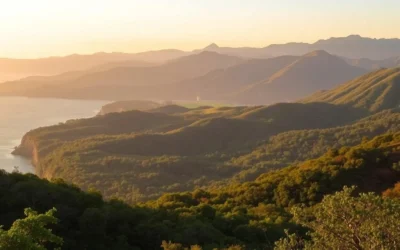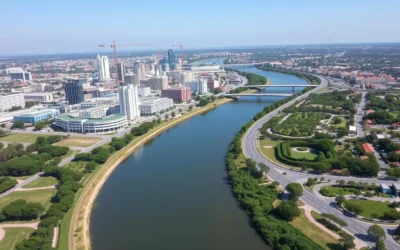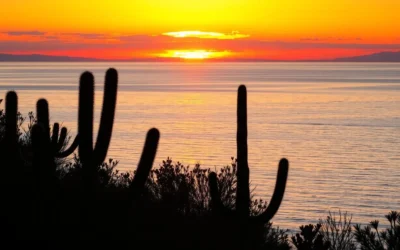✓ Accommodations✓ Flights✓ Rental Cars
Imagine a city where ancient traditions blend seamlessly with vibrant contemporary life, where the air is filled with the aroma of exotic spices, and the sound of lively mariachi music. Welcome to Oaxaca de Juarez, the cultural and culinary heart of Mexico.
This enchanting city offers an incredible array of experiences for every type of traveler. From exploring colonial architecture to savoring world-renowned cuisine, you’ll be immersed in a world of rich heritage and flavor.
As you plan your trip, you’ll want to know the top things to do in this captivating destination. Our guide will help you navigate the city’s colorful streets, uncovering the authentic experiences that make Oaxaca de Juarez truly unforgettable.
Discovering the Cultural Heart of Mexico
With its deep indigenous roots and vibrant arts scene, Oaxaca de Juarez is a city that will captivate your senses and leave you wanting more. As you plan your travel itinerary, this Mexican gem should be at the top of your list.

Why Oaxaca Should Be on Your Travel Bucket List
Oaxaca city stands as Mexico’s cultural treasure, boasting deep indigenous roots, centuries-old traditions, and a vibrant arts scene that makes it an essential place for your travel bucket list. The unique blend of Zapotec and Mixtec heritage creates an authentic cultural experience unlike anywhere else in Mexico, evident in everything from architecture to cuisine.
This rich cultural tapestry is woven into the fabric of the city, making every visit a fascinating journey through Mexico’s history and traditions.
Best Time to Visit and Getting Around
Planning your trip to Oaxaca at the right time can make all the difference. The best time to visit Oaxaca, Mexico, is during the dry season, from late October to early May, when the weather is pleasant and conducive to exploration.
Getting around Oaxaca is straightforward, thanks to its pedestrian-friendly city center, which allows you to discover most attractions on foot. For longer distances, taxis provide a convenient mode of transportation, making it easy to navigate the city and enjoy all it has to offer.
Exploring Oaxaca’s Historic Centro
As you wander through Oaxaca’s historic center, you’ll discover a captivating blend of colonial architecture and indigenous culture. This vibrant area is a UNESCO World Heritage Site, offering a unique experience that showcases the city’s rich heritage.
El Zócalo: The City’s Vibrant Main Square
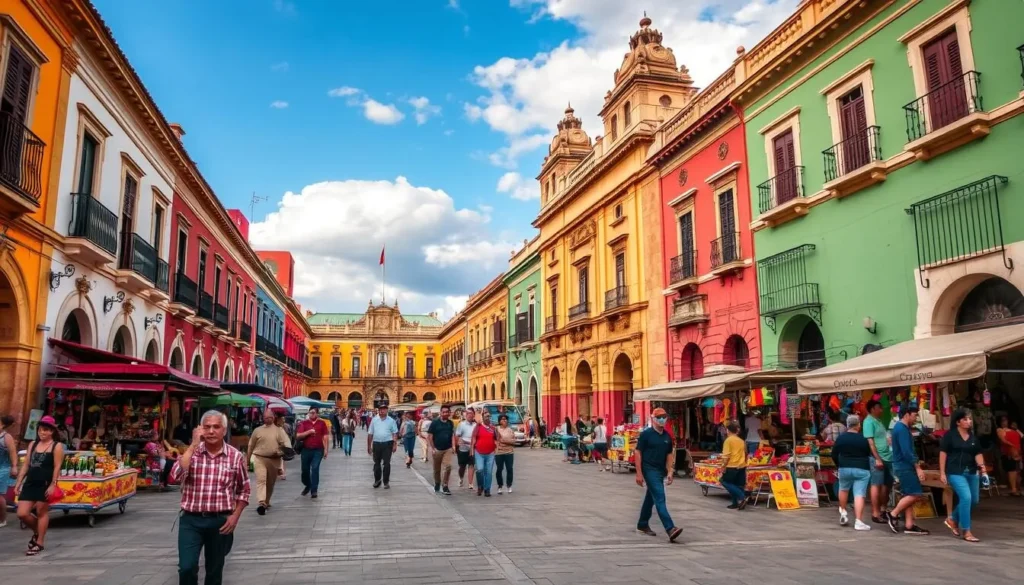
El Zócalo, or Plaza de la Constitución, is the beating heart of Oaxaca City’s historic centro. This bustling main square is surrounded by significant landmarks, including the Oaxaca Cathedral. As you explore El Zócalo, you’ll be immersed in a lively atmosphere filled with street food stalls, fresh fruit vendors, and local artisans selling traditional handicrafts.
The square is a perfect place to people-watch and experience the local culture. With dozens of street food stalls and vendors, you’ll be treated to a sensory experience, from the enticing aromas of local cuisine to the vibrant colors of traditional clothing and handicrafts.
Strolling Through Charming Colonial Streets
As you stroll through the charming colonial streets radiating from El Zócalo, you’ll discover a city center that is both picturesque and full of life. The pedestrian-friendly streets make exploration a delight, with each turn revealing new and unexpected discoveries.
The historic city center is home to boutique shops, cozy cafés, and art galleries, showcasing the city’s creative spirit. You’ll experience the city’s rich cultural heritage as you wander through the colorful buildings and charming plazas, making for a truly memorable visit to Oaxaca’s city center.
Must-Visit Churches and Religious Sites
When visiting Oaxaca, you’ll discover a plethora of breathtaking churches that showcase the city’s deep-rooted faith and history. The city’s historic center is home to some of the most significant and beautiful religious sites in Mexico.
Templo de Santo Domingo de Guzmán
The Templo de Santo Domingo de Guzmán is arguably the most beautiful church in all of Oaxaca, renowned for its stunning Baroque architecture. Mainly built between 1570 and 1608, this magnificent structure showcases the incredible craftsmanship of artists who traveled from Puebla and other parts of Mexico to create this religious masterpiece.
The church’s thick stone walls and pillars were designed to withstand Oaxaca’s frequent earthquakes, demonstrating the ingenious architectural solutions of colonial builders. As you step inside, you’ll be amazed by the breathtaking interior, where the domed ceiling is adorned with ornate paintings, a spectacular gilded altar, and intricate golden details.
Oaxaca Cathedral and Other Notable Churches
Beyond the Templo de Santo Domingo, Oaxaca City is home to numerous other notable churches worth visiting. The Oaxaca Cathedral, facing the Zócalo, is a must-see with its impressive façade and historical significance as the city’s main religious gathering place.
Other notable mentions include the Basílica de la Soledad, which houses the venerated Virgin of Soledad, Oaxaca’s patron saint, and the Church of San Felipe Neri with its distinctive pink façade. These churches not only reflect the city’s rich cultural heritage but also offer a glimpse into its complex history and deep-rooted faith.
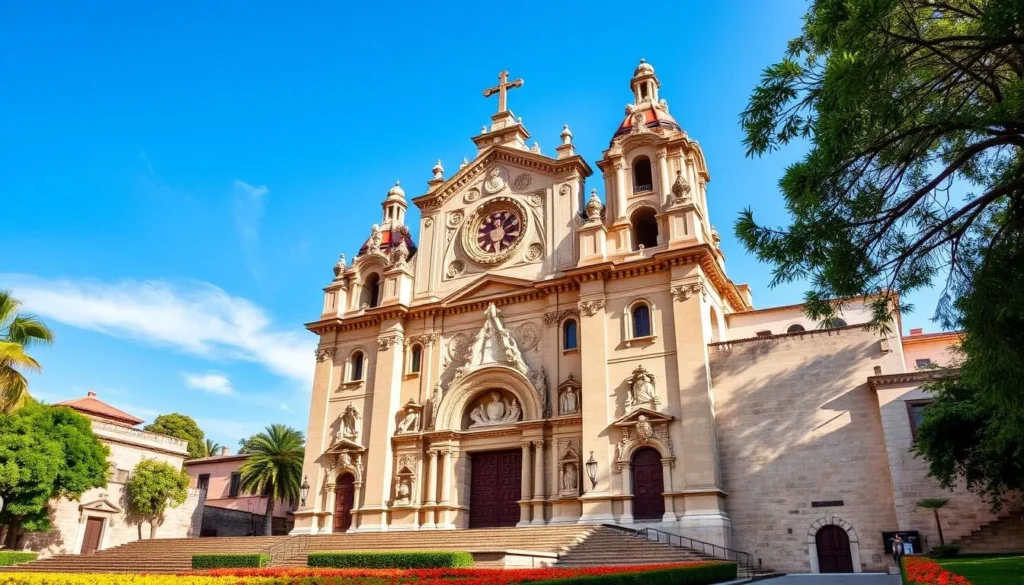
Immersing in Oaxaca’s Museum Scene
Immerse yourself in Oaxaca’s vibrant cultural scene by visiting its world-class museums. Oaxaca de Juarez is home to a diverse array of museums that showcase the city’s rich history, indigenous culture, and artistic traditions.
Museo de las Culturas de Oaxaca
The Museo de las Culturas de Oaxaca is a must-visit attraction in the city. Housed in a centuries-old monastery, this museum is not only a repository of precious artifacts but also a historic building that is a work of art in itself. As you explore the museum, you’ll discover a vast collection of artifacts and art from the Pre-Colombian era, as well as from the colonial period.
The museum’s collection provides a fascinating insight into the diverse indigenous cultures that have shaped the state of Oaxaca. With a daily entry fee of just 95 MXN (about $5), it’s an affordable and enriching experience.
Textile Museum and Other Cultural Exhibits
Another highlight of Oaxaca’s museum scene is the Museo Textil de Oaxaca, a free museum dedicated to preserving and celebrating the region’s exceptional textile traditions. The museum features rotating exhibitions of both historical and contemporary textiles, making it a great place to learn about the local culture.
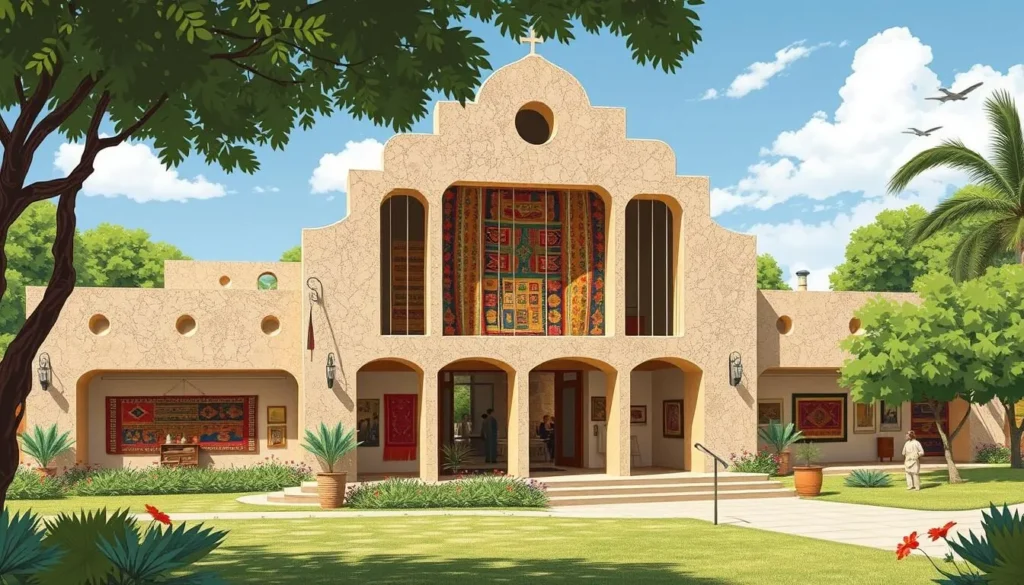
In addition to these museums, Oaxaca is also home to other cultural exhibits, including the Museo De La Filatelia, which features surrealist art and a beautiful patio. The city’s museums offer a welcome respite from the midday heat and provide a deeper understanding of the cultural experiences you’ll have throughout your visit.
By exploring Oaxaca’s museums, you’ll gain a deeper appreciation for the city’s rich cultural heritage and the many indigenous cultures that have shaped it.
Exploring Ancient Archaeological Sites
Discover the ancient civilizations that once flourished in Oaxaca’s archaeological sites. The state is home to some of Mexico’s most significant archaeological sites, offering a glimpse into the lives of pre-Columbian civilizations.
Monte Albán: The Ancient Zapotec Capital
Monte Albán is a must-visit archaeological site in Oaxaca, and for good reason. As the capital of the Zapotec civilization for nearly 1,000 years, it was one of the earliest major cities in Mesoamerica. The site boasts impressive pyramids, canals, terraces, and dams, showcasing the ingenuity of ancient engineering.
To fully appreciate the history and significance of Monte Albán, consider booking a guided tour. An expert guide can provide insights into the site’s historical and cultural context, enhancing your overall experience.
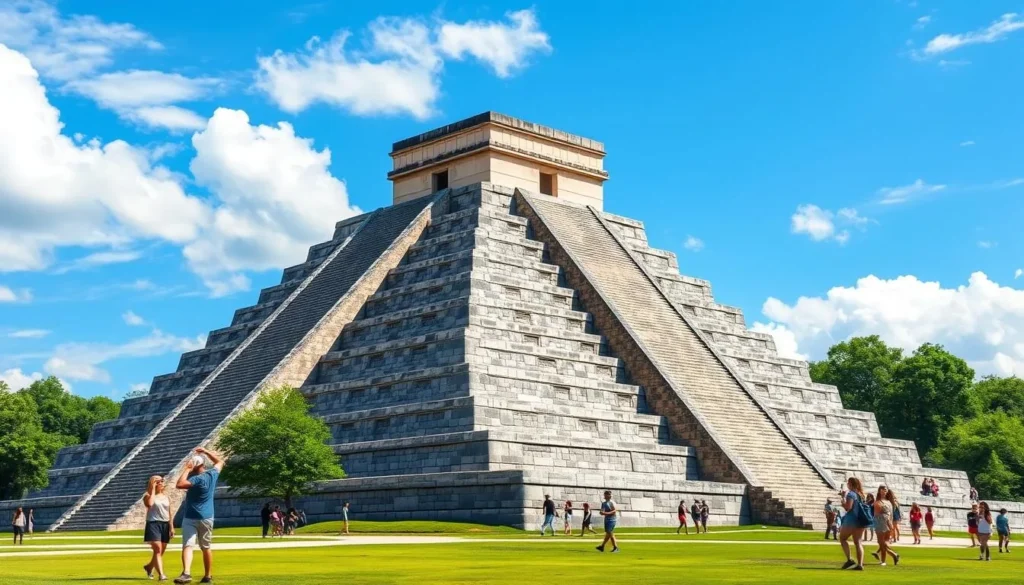
Mitla and Other Nearby Ruins
Beyond Monte Albán, the state of Oaxaca is dotted with other notable sites, including Mitla, Yagul, and Xaagá. Mitla is particularly noteworthy for its intricate stone mosaics and geometric designs, reflecting the artistic sophistication of the Mixtec civilization.
While all these sites are worth visiting, Monte Albán stands out as a priority due to its comprehensive representation of ancient Oaxacan history. If time is limited, focusing on Monte Albán will provide the most rewarding experience.
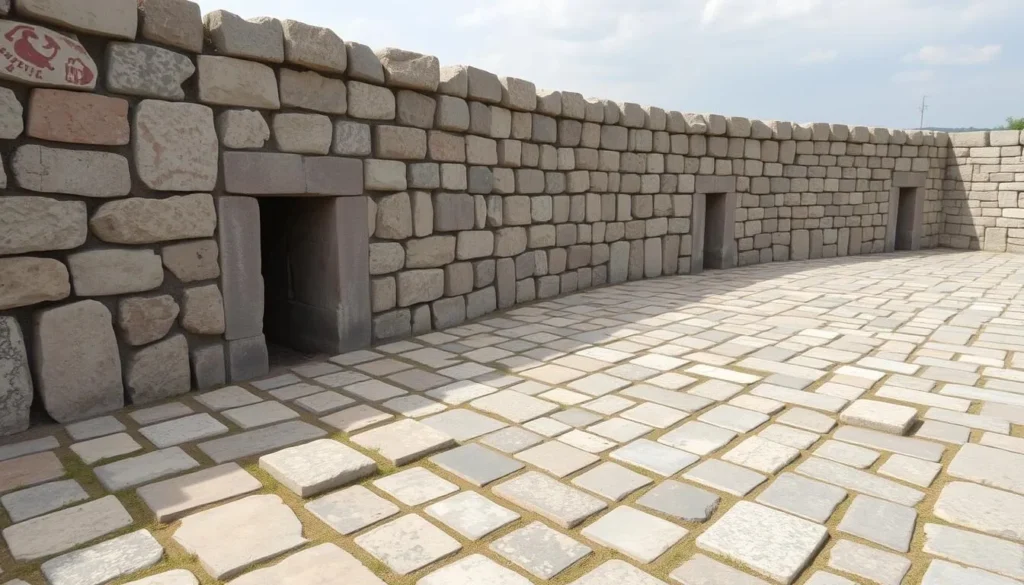
Diving into Oaxaca’s Culinary Scene
As you explore Oaxaca, you’ll discover a culinary landscape that’s as diverse as it is delicious. The city’s restaurants offer a range of traditional and modern dining experiences that showcase the best of Oaxacan cuisine.
Must-Try Traditional Dishes
Oaxaca is widely celebrated as Mexico’s culinary capital, where ancient indigenous cooking techniques and ingredients combine with Spanish influences to create one of the world’s most distinctive regional cuisines. No culinary experience in the city is complete without sampling the seven traditional moles of Oaxaca, particularly the complex mole negro with its blend of over 30 ingredients including chocolate, chiles, and spices.
Other must-try traditional dishes include tlayudas (large toasted tortillas topped with beans, cheese, and meats), tetelas (triangular corn pockets filled with beans), and for the adventurous, chapulines (seasoned grasshoppers) – a local delicacy.
Top Restaurants and Dining Experiences
Oaxaca’s fine dining scene offers exceptional value compared to similar experiences in Europe or the United States, with restaurants like Casa Oaxaca, Levadura de Olla, and Origen serving innovative interpretations of traditional food.
For a truly special dining experience, secure a reservation at Casa Oaxaca’s rooftop, where you can enjoy tableside salsa preparation and modern Mexican cuisine while overlooking the beautiful Templo de Santo Domingo. Don’t miss other standout restaurants like Criollo (by acclaimed chef Enrique Olvera), Alfonsina (for authentic home cooking), and Las Quince Letras (for traditional Oaxacan specialties).
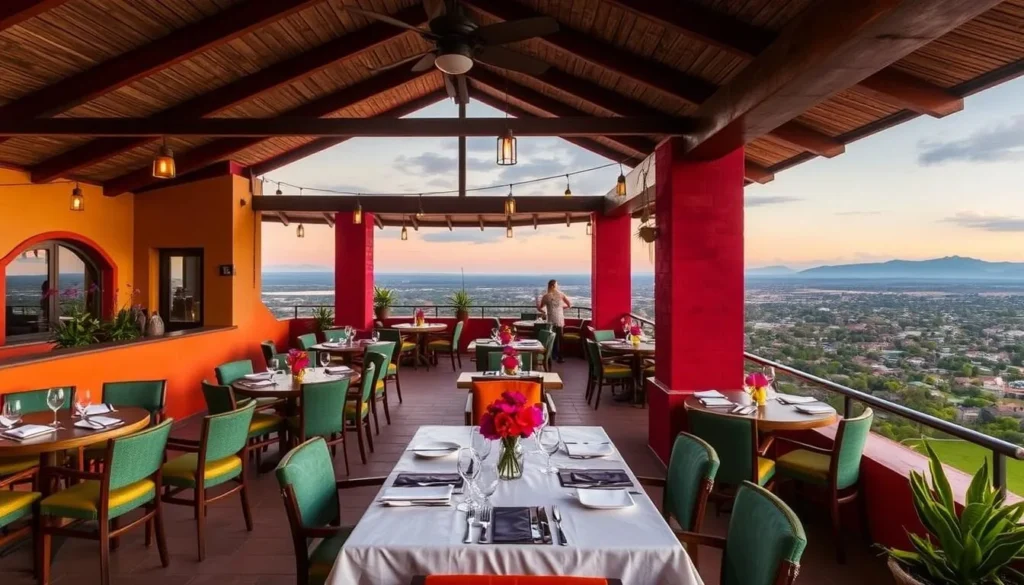
Savoring Oaxaca’s Street Food Culture
To truly experience Oaxaca, you need to dive into its vibrant street food culture. The city’s culinary scene is deeply rooted in indigenous traditions and centuries-old cooking techniques, making every meal a flavorful journey.
Where to Find the Best Street Food
Oaxaca’s street food is not just about grabbing a quick bite; it’s an immersive culinary experience. To find the best stalls, head to the corridors of Mercado 20 de Noviembre, the food stalls surrounding the Zócalo, and the Tlacolula Sunday Market. Here, you can watch indigenous dishes being prepared right before your eyes.
For first-time visitors, taking a guided street food tour with a local expert is highly recommended. They’ll lead you to the most hygienic and delicious stalls while explaining the cultural significance behind each dish.
Iconic Street Food Dishes to Try
Some must-try street food dishes include tlayudas (often called “Oaxacan pizza”), memelas (thick corn patties topped with beans and cheese), tamales oaxaqueños wrapped in banana leaves, and tetelas (triangular corn pockets with various fillings). Don’t miss the Pasillo de los Tasajos in Mercado 20 de Noviembre for a unique experience where you can select raw meat and have it grilled alongside onions and chiles.
As you explore the street food scene, remember to look for busy stalls with plenty of local customers, as this is a sign of quality and freshness. With a little courage and curiosity, you’ll discover the authentic flavors of Oaxaca.
Exploring Oaxaca’s Vibrant Markets
Oaxaca’s markets are a must-visit destination for anyone looking to experience the authentic pulse of the city. These vibrant hubs offer a kaleidoscope of colors, sounds, and aromas that showcase the rich cultural heritage of Oaxaca.
Mercado Benito Juárez and Mercado 20 de Noviembre
Mercado Benito Juárez is a labyrinthine market located in the heart of Oaxaca City, offering a vast array of goods, including traditional foods, spices, clothing, and handicrafts. Adjacent to it is Mercado 20 de Noviembre, a food-focused market where visitors can sample local specialties like tlayudas, mole, and chocolate.
The combined experience of these two markets provides a comprehensive introduction to Oaxacan cuisine and culture. Be sure to allocate a few hours to explore the stalls and sample the local delicacies.
Tlacolula Sunday Market and Other Local Markets
For a more authentic experience, visit the Tlacolula Sunday Market, a traditional “tianguis” that has been in operation for centuries. This open-air market is a sensory wonderland, with indigenous vendors selling everything from fresh produce to handmade crafts.
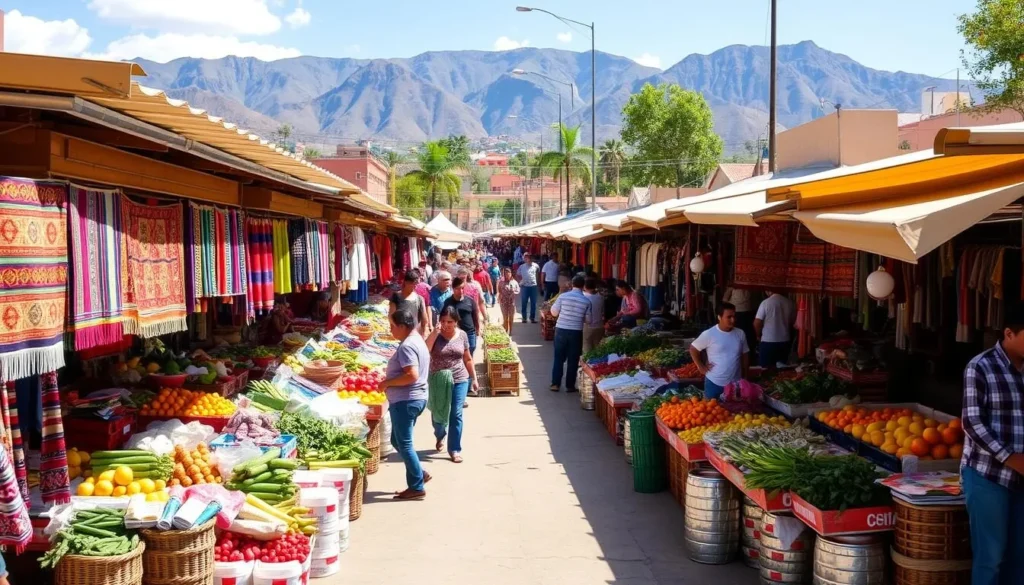
Other notable markets in Oaxaca include the Mercado de Abastos, Central de Abastos, and the Organic Market. Each offers a unique perspective on the local culture and way of life.
Discovering Traditional Crafts and Artisan Villages
Immerse yourself in the artisanal world of Oaxaca by visiting its charming villages. The region is home to a rich cultural heritage, with various communities preserving traditional crafts that have been passed down through generations.
Teotitlán del Valle: The Weaving Village
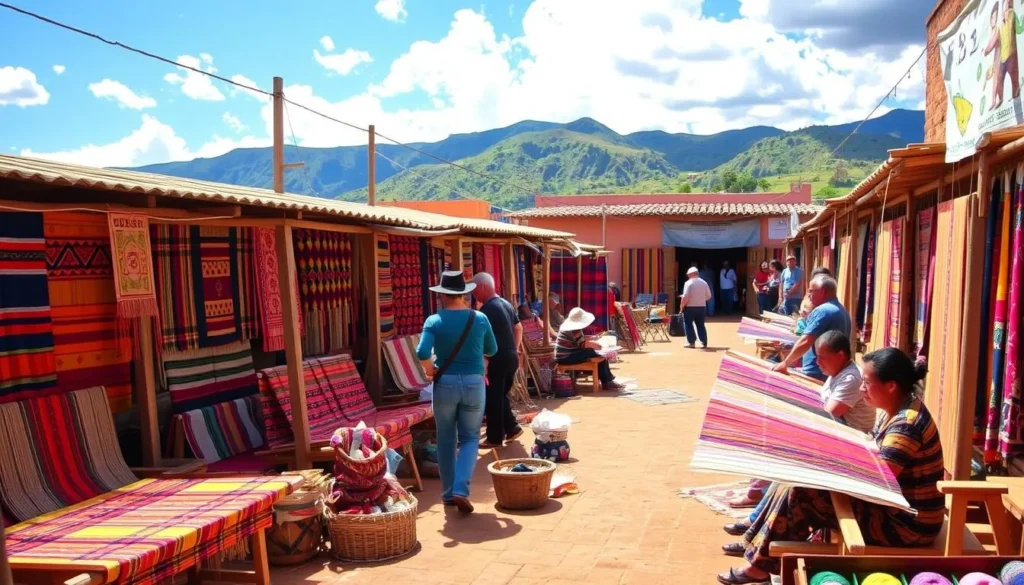
Teotitlán del Valle is renowned for its exceptional textile tradition, where Zapotec weavers create vibrant wool rugs and tapestries using techniques passed down through generations. Visiting a weaving workshop allows you to witness the entire process, from spinning and dyeing wool with natural ingredients to the intricate weaving on traditional looms.
San Bartolo Coyotepec: Home of Black Clay Pottery

San Bartolo Coyotepec is famous for its distinctive black clay pottery, a unique art form where artisans create glossy black ceramics using techniques that date back to pre-Columbian times. This village is a great place to experience the art and craftsmanship that Oaxaca is known for, making it a memorable part of your visit to the region.
The villages surrounding Oaxaca City are home to master artisans who preserve ancient crafting traditions, creating some of Mexico’s most distinctive and sought-after handmade goods. These artisan communities not only offer beautiful handcrafted souvenirs to bring home but provide meaningful cultural experiences where you can connect with the region’s living artistic heritage and support traditional ways of life.
Oaxaca de Juarez, Mexico: Best Things to Do – Top Picks for Mezcal Lovers
Oaxaca de Juarez, the mezcal capital of Mexico, is where you can immerse yourself in the rich traditions and flavors of this iconic spirit. As you explore the city, you’ll discover numerous mezcalerías and distilleries that offer a unique mezcal experience.
Mezcal Tastings and Mezcalerías in the City
Oaxaca City is home to many exceptional mezcalerías where you can sample a wide variety of artisanal mezcals. For an educational tasting experience, visit La Mezcaloteca or Mezcalillera, where knowledgeable staff guide you through flights of rare mezcals, explaining the nuances of different agave varieties and production regions.
Other outstanding mezcal bars include Selva, featured on North America’s 50 Best Bars list, Sabina Sabe, which also serves excellent small plates, and In Situ, known for its extensive selection of small-batch producers.
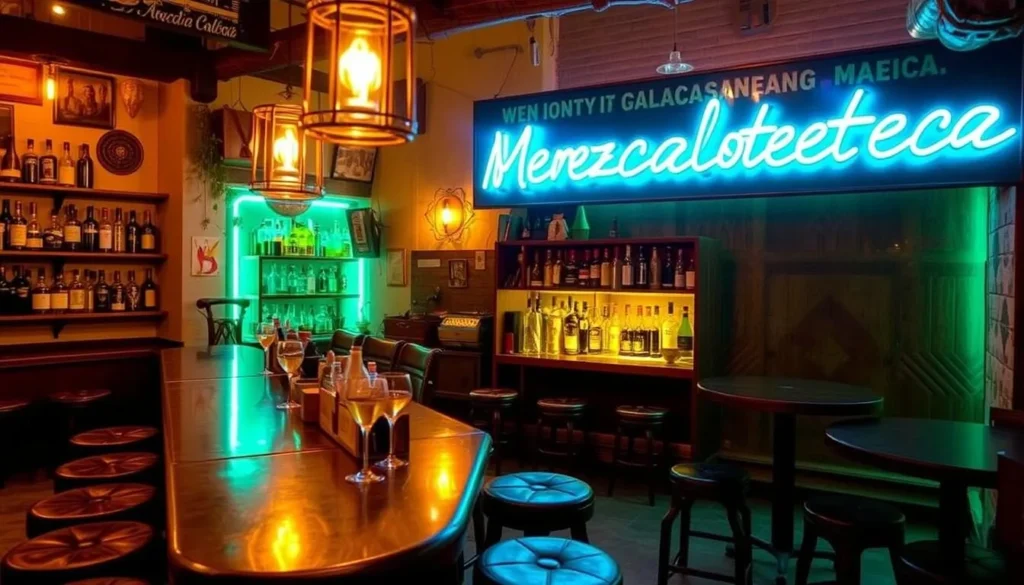
Visiting Mezcal Distilleries in the Countryside
To deepen your mezcal experience, take a tour to the region‘s palenques (distilleries) in Santiago Matatlán, known as the “World Capital of Mezcal.” Here, you can witness the traditional production process from roasting agave hearts to distillation.
During these tours, you’ll learn how mezcal production remains largely unchanged for centuries, with agave hearts roasted in underground pits, crushed by a stone wheel pulled by horses, and fermented in wooden vats before distillation.
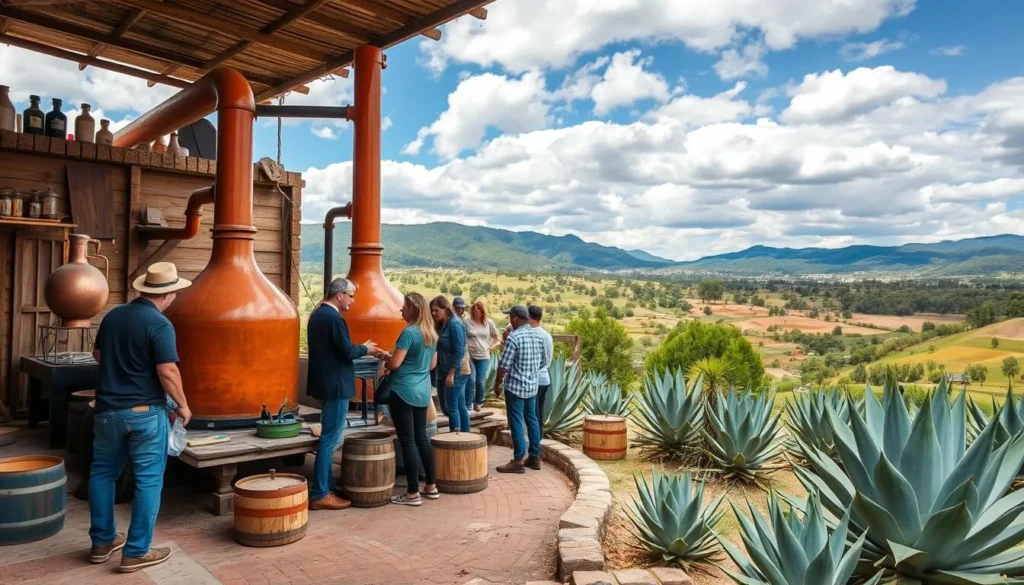
Natural Wonders Around Oaxaca
The natural wonders around Oaxaca provide a refreshing contrast to the city’s urban experience. Beyond its cultural riches, Oaxaca is blessed with remarkable natural attractions that are worth exploring.
Hierve el Agua: Petrified Waterfalls
Hierve el Agua, located about 1.5 hours from Oaxaca City, is a stunning spectacle featuring petrified waterfalls created by mineral-rich water flowing over the mountainside for thousands of years. The site boasts natural mineral pools perched on a cliff edge with breathtaking views of the surrounding valleys.
You can swim in the mineral-rich waters believed to have healing properties. To avoid crowds and heat, visit Hierve el Agua early in the morning, as the site has a daily visitor limit of 200 people and tends to fill up quickly, especially during high season.
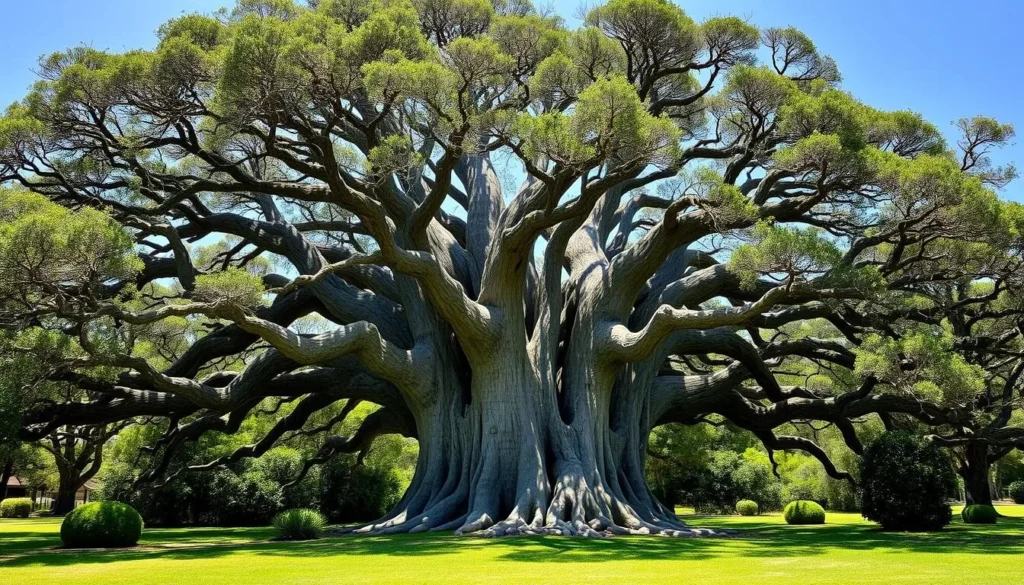
El Tule: The Ancient Tree
Another natural marvel is El Tule, home to a 2,000-year-old Montezuma cypress tree with the widest trunk in the world, measuring over 46 feet in diameter. This ancient tree has been growing since before the rise of many Mesoamerican civilizations.
The area around El Tule tree is a pleasant place to relax, with a small church, garden, and craft vendors nearby, making it an easy half-day trip from Oaxaca City that can be combined with visits to other attractions in the Central Valley.
Exploring these natural wonders, such as Hierve el Agua and El Tule, provides a unique experience that complements Oaxaca’s rich cultural heritage. The area around Oaxaca is full of natural beauty, making it a great destination for those looking to explore beyond the city.
Experiencing Oaxaca’s Art and Street Culture
As you wander through Oaxaca’s charming neighborhoods, you’ll discover a thriving art scene that goes beyond traditional museums and galleries. The city’s artistic vibe is palpable, with colorful murals and public art installations transforming the streets into an open-air gallery.
Street Art in Jalatlaco and Xochimilco Neighborhoods
The residential neighborhoods of Xochimilco and Jalatlaco are home to some of the city’s most impressive street art, with murals depicting everything from indigenous mythology to contemporary social commentary. Roaming the charming neighborhood of Xochimilco and checking out the street art is one of the most underrated things to do in Oaxaca!
Discover lesser-known neighborhoods like Jalatlaco, where colorful murals and quiet streets offer a peaceful escape. These hidden gems are perfect for those seeking a more intimate experience. The murals here are super colorful and mostly represent different aspects of Mexican culture.
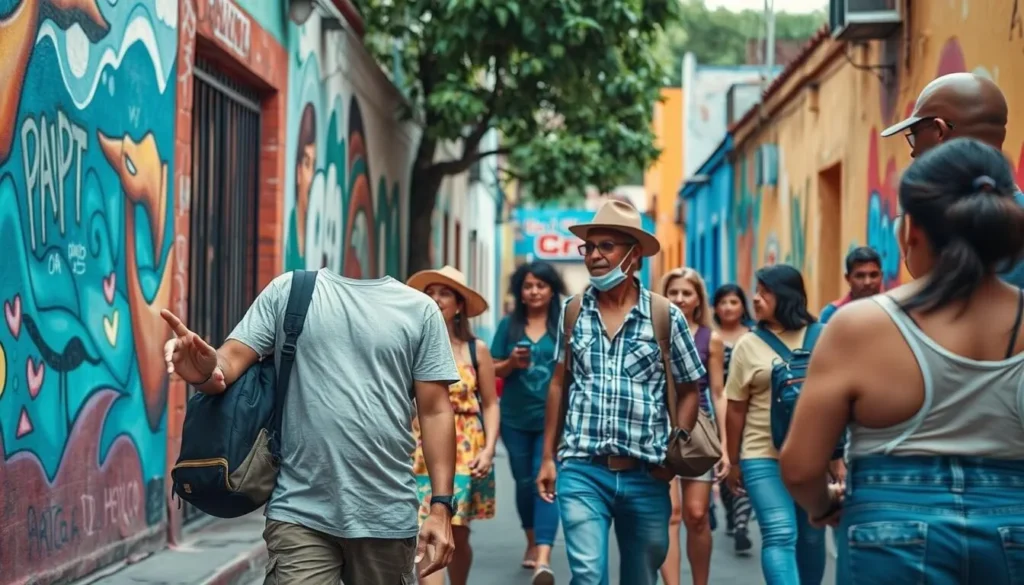
Art Galleries and Contemporary Art Scene
For art enthusiasts, Oaxaca’s contemporary gallery scene is equally impressive, with spaces like MACO (Museum of Contemporary Art of Oaxaca) and Taller de Gráfica showcasing works by established and emerging Mexican artists. Don’t miss the opportunity to visit independent art spaces like Espacio Zapata and Taller Gráfica Actual, where you can often meet local artists and perhaps purchase original prints at reasonable prices.
Oaxaca’s vibrant art scene extends beyond museums and galleries into the streets, where colorful murals and public art installations transform neighborhoods into open-air galleries. The city‘s artistic vibe is palpable, making it a must-visit destination for art lovers.
Where to Stay in Oaxaca
The city of Oaxaca is filled with unique accommodation options, reflecting the city’s authentic charm and character. You’ll find a diverse range of places to stay, from luxurious boutique hotels to charming bed and breakfasts, each offering a distinct experience.
Luxury and Boutique Hotels
For a luxurious stay, Oaxaca offers exceptional properties like Quinta Real Oaxaca, set in a 16th-century convent. You’ll love the historic charm and modern amenities.
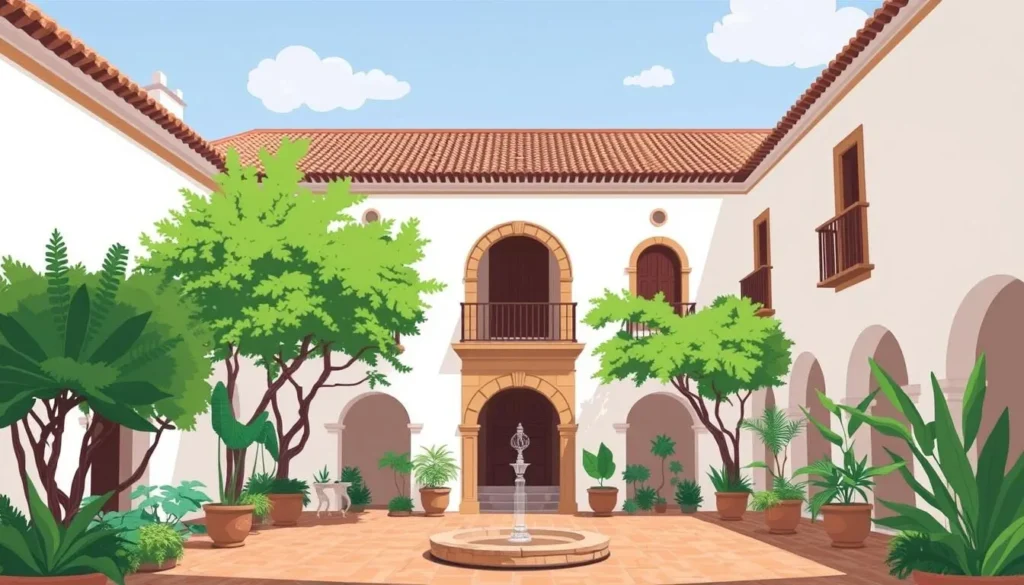
Other top recommendations include Palacio Borghese Hotel Boutique and Casa Antonieta, offering a blend of colonial elegance and modern design.
Mid-Range and Budget Accommodations
Travelers on a budget will find excellent value at mid-range hotels like NaNa Vida Hotel Oaxaca and La Casa de Pino, offering comfortable rooms and welcoming atmospheres. For budget-friendly options, consider hostels like Azul Cielo or Casa Angel.

When choosing your place to stay, consider the area – the historic center offers proximity to major attractions, while quieter neighborhoods like Jalatlaco or Xochimilco provide a more peaceful atmosphere.
Oaxaca’s accommodation scene is characterized by its unique character, offering something for every traveler. Whether you’re looking for luxury, mid-range, or budget-friendly options, you’ll find a place that suits your needs in this vibrant city.
Day Trips from Oaxaca City
When visiting Oaxaca City, you’ll find that the surrounding areas offer a wealth of exciting day trip opportunities. From ancient ruins to serene natural escapes, these excursions offer a perfect blend of culture and adventure. Whether you’re a history buff or a nature enthusiast, there’s something for everyone.
Sierra Norte: Ecotourism and Hiking
The Sierra Norte region is a must-visit for outdoor enthusiasts. This area is known for its ecotourism and offers hiking trails through lush forests. A guided hike to Cuajimoloyas is highly recommended for its panoramic views and fresh mountain air. You’ll have the opportunity to explore the region’s cloud forests, pine-covered mountains, and network of hiking trails connecting indigenous Zapotec villages.
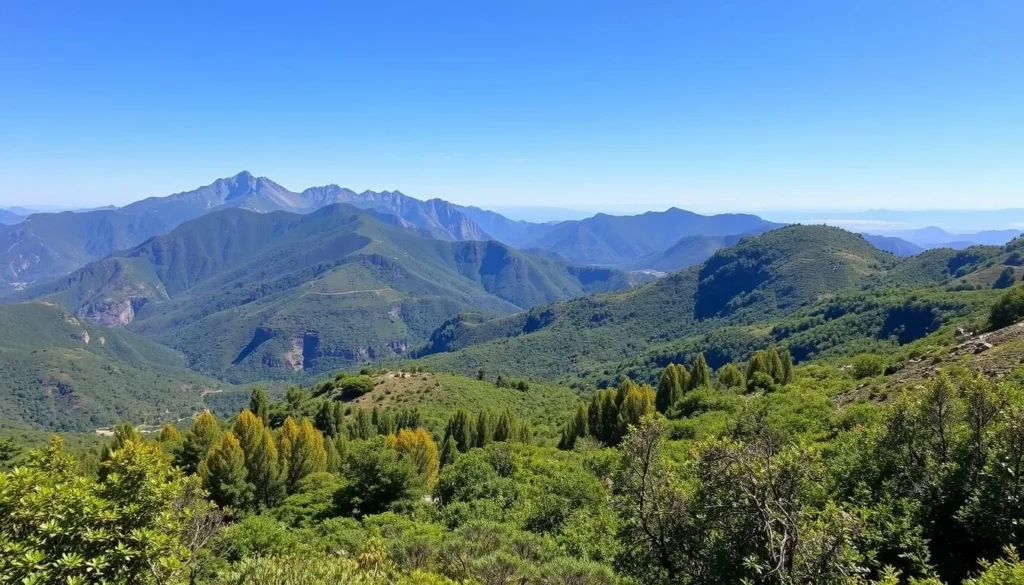
Other Worthwhile Excursions
In addition to Sierra Norte, there are many other worthwhile excursions to consider. A visit to Hierve el Agua should top your day trip list, where you’ll find petrified waterfalls and mineral pools with spectacular mountain views. Many visitors combine several attractions into a single day tour, such as visiting the ancient Tule Tree, the archaeological site of Mitla, a weaving demonstration in Teotitlán del Valle, and a mezcal distillery. For those interested in pre-Hispanic history, a day trip to the Mixtec sites of Yagul and Mitla provides a fascinating contrast to Monte Albán, with distinctive architectural styles and fewer crowds.
Some popular day trip options include:
- A visit to Hierve el Agua to see the petrified waterfalls and mineral pools.
- A guided hike in the Sierra Norte region, exploring cloud forests and indigenous villages.
- A day tour that combines visits to the ancient Tule Tree, Mitla archaeological site, and a mezcal distillery.
- A trip to the Mixtec sites of Yagul and Mitla to explore pre-Hispanic history.
These day trips offer a great way to experience the diversity of Oaxaca’s landscapes, cultures, and histories. By taking a day trip from Oaxaca City, you’ll be able to explore the region’s hidden gems and create unforgettable memories.
Practical Tips for Visiting Oaxaca
As you plan your trip to Oaxaca, it’s essential to be aware of some practical tips to make the most of your visit. Oaxaca de Juarez is a city that is rich in culture and history, and being prepared will help you navigate it with ease.
Safety Information and Local Customs
Oaxaca is generally considered one of the safest destinations in Mexico. However, it’s always wise to exercise common sense when traveling. Be mindful of your belongings and surroundings, especially in crowded areas. The local customs are rich and vibrant, and respecting them will enhance your experience.
- Be aware of your surroundings, especially at night.
- Respect local customs and traditions.
- Keep valuables secure.
Money, Language, and Transportation Tips
When you’re traveling in Oaxaca, it’s helpful to know a few practical details. The local currency is Mexican pesos, and you’ll need cash for smaller stores, food stalls, and markets. Credit cards are widely accepted at larger institutions.
| Aspect | Detail |
|---|---|
| Currency | Mexican Pesos |
| Language | Spanish (some English in tourist areas) |
| Transportation | Taxis, walking, and local buses |
It’s also a good idea to learn a few basic Spanish phrases, as this will be appreciated by the locals. Oaxaca’s city center is compact and pedestrian-friendly, making it easy to explore on foot. For longer distances, taxis are a convenient option.
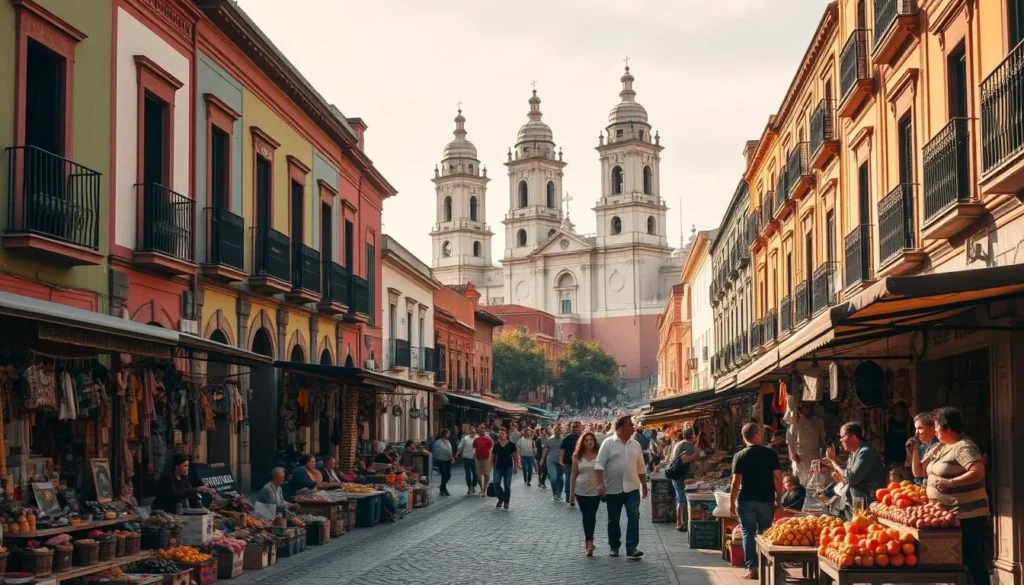
By being prepared and aware of these practical tips, you’ll be able to enjoy your time in Oaxaca to the fullest. Whether you’re exploring the historic centro, trying local cuisine, or visiting ancient archaeological sites, Oaxaca has something to offer every kind of traveler.
Conclusion: Creating Unforgettable Memories in Oaxaca
As you conclude your journey through Oaxaca, the memories of this enchanting city will linger, inviting you to return. The experiences you’ve collected – from wandering ancient ruins to savoring complex food dishes – create a tapestry of memories that represent the authentic soul of Mexico.
Oaxaca’s greatest charm lies in its ability to preserve traditions while embracing the present, creating a place where centuries-old crafts thrive alongside contemporary art. Whether you spent your time exploring street food stalls or simply sitting in the zócalo watching the world go by, Oaxaca offers a depth of experience that few destinations can match.
Beyond the things you’ve seen and tasted, it’s the connections with local people – the weavers, potters, chefs, and guides who’ve shared their stories – that often become the most treasured souvenirs of your Oaxacan adventure. As you return home with your suitcase perhaps a bit heavier with textiles or mezcal, you’ll carry with you the colors, flavors, and warmth of this extraordinary city, a place that doesn’t just offer things to do but provides a genuine connection to the heart of Mexican culture.
The above is subject to change.
Check back often to TRAVEL.COM for the latest travel tips and deals.

